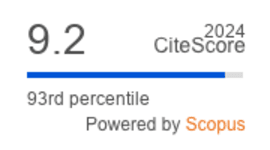Streptomyces at the Heart of Several Sectors to Support Practical and Sustainable Applications: A Review
DOI:
https://doi.org/10.36877/pmmb.a0000345Abstract
This article emphasizes the various contributions of actinobacteria to the well-being of human life on our planet. Agrarian virtues begin with the substitution of chemical fertilizers with bio-fertilizing microorganisms which have a versatile potential for the benefit of soil and plants by playing complementary and interconnected roles. Thus, these microorganisms improve soil health through bioremediation phenomena and the elimination of several non-beneficial microorganisms. In agriculture, these microorganisms can be added to compost as inoculants to speed up the composting process and provide an additional source of beneficial microorganisms for the compost-treated soil. Streptomyces and other actinobacteria can also be used as biotechnological sources of herbicides and insecticides. In the medical and therapeutic sectors, this paper emphasizes the potential of actinobacteria, in particular Streptomyces species, in the production of antibiotics, antioxidant, and anticancer agents, opening up avenues for the creation of molecules with high benefits. In biotechnology, these totipotent microorganisms produce enzymes widely used in several industries, generating considerable revenue. Sporadic data accumulated on these types of microorganisms opens up many new avenues for exploiting these natural biocatalytic resources. Papers published in the last decade have exploded the amount of information that can be put to practical use. To maximize the value of these microorganisms, it would be advisable to create common threads between the themes that bring together the areas of expertise where these microorganisms could potentially be exploited. This bibliographical synthesis is a contribution to the development of a targeted database.
Downloads
Published
How to Cite
Issue
Section
License
Copyright (c) 2023 Oumaima Beroigui, Faouzi Errachidi

This work is licensed under a Creative Commons Attribution-NonCommercial 4.0 International License.
Author(s) shall retain the copyright of their work and grant the Journal/Publisher right for the first publication with the work simultaneously licensed under:
Creative Commons Attribution-NonCommercial 4.0 International (CC BY-NC 4.0). This license allows for the copying, distribution and transmission of the work, provided the correct attribution of the original creator is stated. Adaptation and remixing are also permitted.

This broad license intends to facilitate free access to, as well as the unrestricted reuse of, original works of all types for non-commercial purposes.
The author(s) permits HH Publisher to publish this article that has not been submitted elsewhere.



.png)

.jpg)
